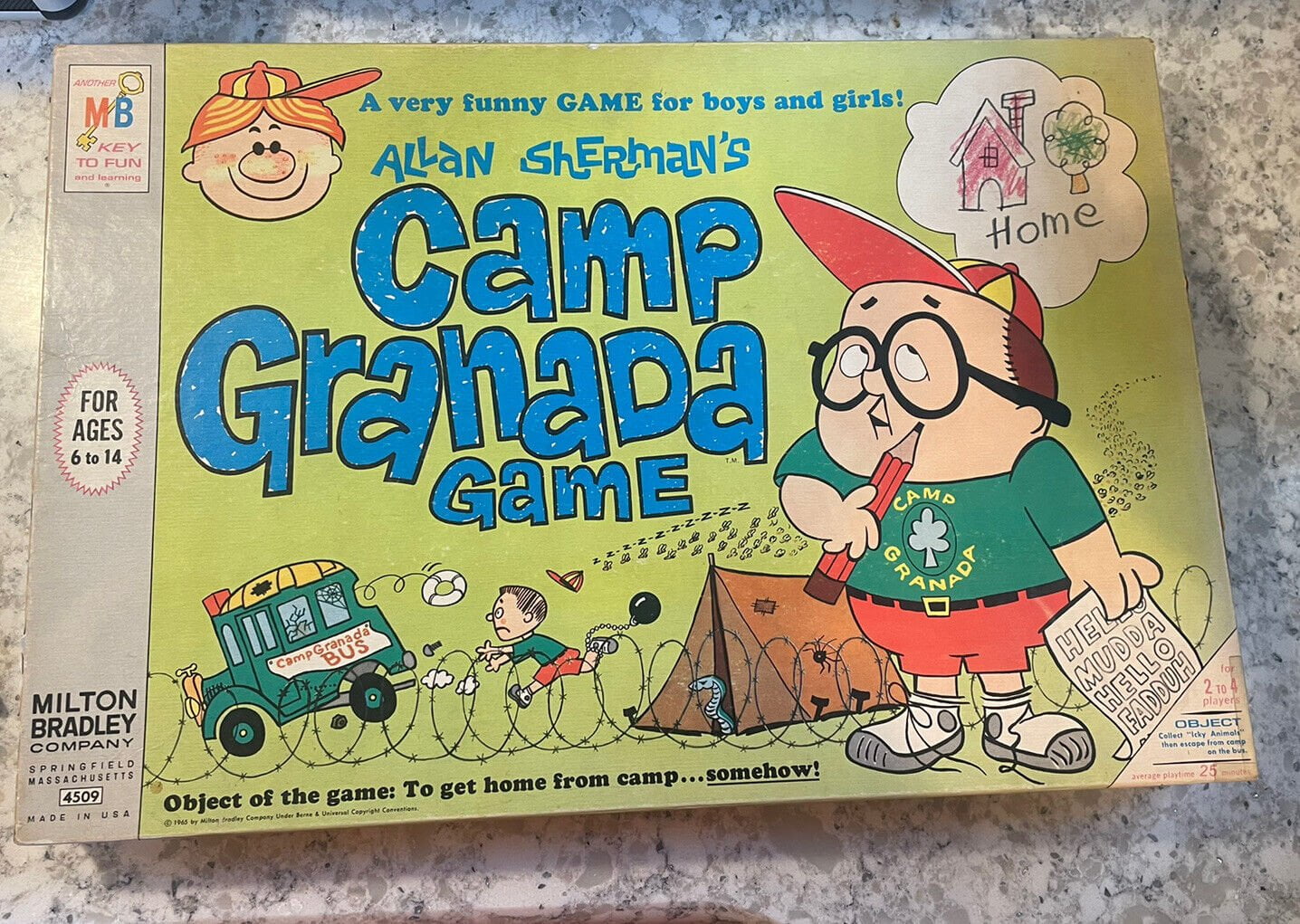Camp Granada (1965)
Camp Granada
Camelot is a strategy board game for two players that was invented by George S. Parker in the late 19th century and was one of the first games published by Parker Brothers, originally under the name Chivalry. The game was reissued as “Camelot” in 1930, with reduced size and number of pieces. It flourished through numerous editions and variants, achieving its greatest popularity in the 1930s, and remained in print through the late 1960s. Parker Brothers briefly republished the game in the 1980s under the name Inside Moves. Since then, it has been out of print, but retains a core of fans anticipating another revival.
Why is Camp Granada Popular?
Camelot is easy to learn and without extensive theory or praxis, making it perhaps more accessible for novices to play/enjoy compared to chess. Gameplay is exceptionally tactical almost from the first move, so games are quick to play to a finish. A World Camelot Federation exists, with free membership, led by Michael W. Nolan. Camelot was featured in Abstract Games magazine in 2001 and 2002.
Game Components of Camp Granada
How To Setup Camp Granada
To set up the game, place the animals at designated camp locations on the game board. Assemble and place the bunkhouses at each corner of the board. Distribute the ICKY animal cards among the players to identify which animals each player needs to gather. Finally, ensure all game components are within reach of the players.
Gameplay Mechanics and Game Objective
Mechanics
Objective
Player Experience
Camp Granada is a quirky and engaging game that combines physical skill with strategic thinking. Players navigate the challenges of a summer camp, complete with humorous obstacles like a diving board with spikes and an octopus in the swimming hole. The game’s unique bus mechanism, which can break down if not handled carefully, adds an element of unpredictability and fun.
Pros
Cons
Personal Thoughts on Camp Granada
Camp Granada is ideal for families and children who enjoy a mix of physical challenge and strategic play. It is a nostalgic piece for those who remember Allan Sherman’s song and can serve as a fun introduction to board games for younger players. However, it may not be the best fit for players seeking complex or deeply strategic gameplay.
We are supported by our audience. When you purchase through links on our site, we may earn an affiliate commission, at no extra cost for you. Learn more.

